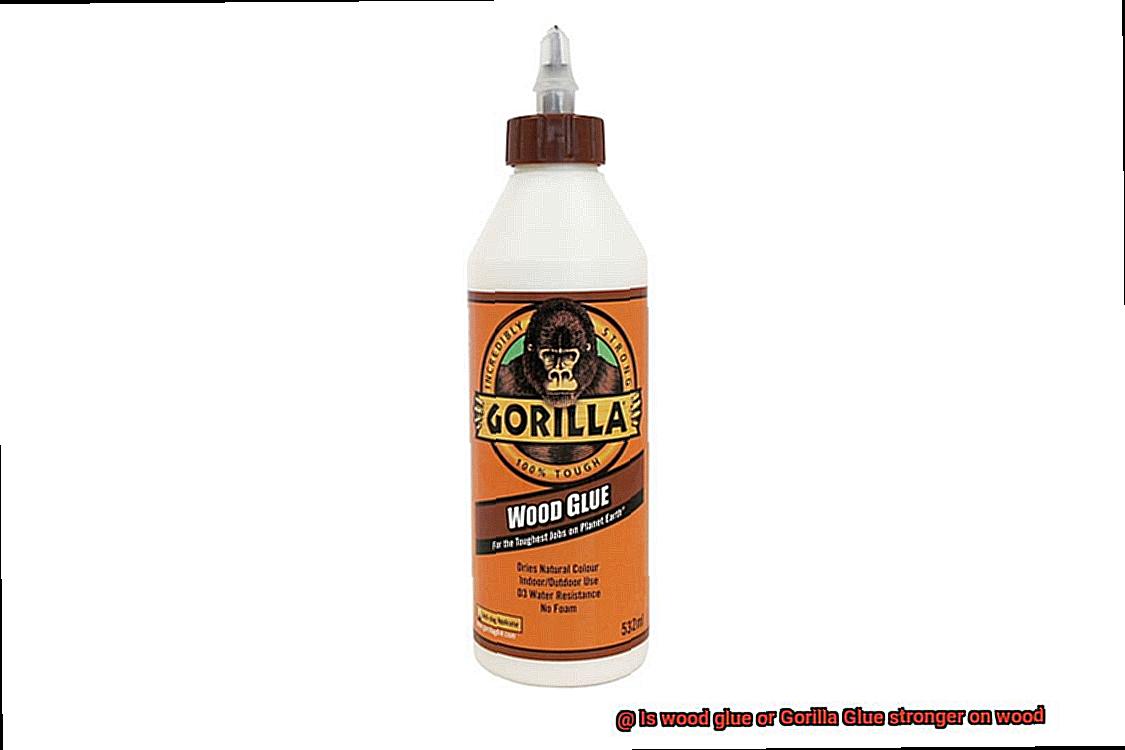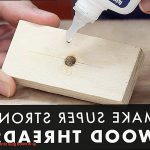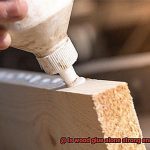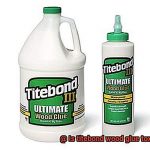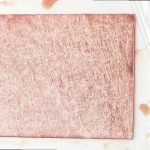Step right into our blog post as we dive headfirst into the never-ending debate: which glue reigns supreme on wood, wood glue or Gorilla Glue?
Whether you’re a weekend warrior tackling DIY projects or a seasoned carpenter crafting masterpieces, this question has likely crossed your mind. Wood glue, the trusty companion of craftsmen everywhere, known for its unwavering reliability and formidable bond.
On the other hand, we have Gorilla Glue, flexing its muscles with claims of unmatched strength and unyielding durability. In this article, we’ll dissect both contenders, weighing their pros and cons so that you can confidently choose the perfect adhesive for your woodworking endeavors.
So, buckle up and prepare to witness the ultimate showdown in the world of glues.
What is Wood Glue?
Contents
Wood glue, also known as carpenter’s glue or PVA glue (polyvinyl acetate), is a remarkable adhesive designed specifically for bonding wood surfaces together. It is the go-to choice for woodworking enthusiasts and professionals alike due to its unbeatable power.
But what exactly is wood glue? Made from a combination of water, resin, and various additives, this adhesive offers a strong and long-lasting bond that surpasses all others. Its unique ability to penetrate deep into the wood fibers sets it apart from the rest. When applied to a wood surface, the glue seeps into every pore and crevice, forming an unbreakable connection. As it dries, the bond becomes solid, capable of withstanding any stress or pressure.
Wood glue comes in different formulations to cater to various project needs. Standard wood glue is perfect for most woodworking projects where moisture resistance is not a concern. However, if you’re working on outdoor applications or areas exposed to moisture, waterproof wood glue is your best bet. This type of wood glue contains additional additives that make it resistant to water.
For more complex assemblies or larger projects that require extra time for positioning and clamping, extended set wood glue comes to the rescue. With its longer open time, you can work at your own pace without compromising bond strength.
Using wood glue is simple, but proper surface preparation is crucial. Ensure the wood is clean, dry, and free from any contaminants like dust or oils that may interfere with the adhesive properties of the glue. Apply an even layer of glue to both surfaces for maximum coverage and bonding strength. And don’t forget to firmly clamp the pieces together while the glue dries.
Now, you might be wondering how wood glue compares to other adhesives like Gorilla Glue. While Gorilla Glue is stronger and can withstand heavy loads and stress, wood glue provides a formidable bond and is more suitable for indoor projects where extreme conditions are not a concern.
What is Gorilla Glue?
This incredible adhesive is a game-changer when it comes to bonding various materials together.
Gorilla Glue is known for its exceptional strength, making it the go-to choice for projects that require a bond that is strong and long-lasting. From woodworking projects to repairing broken ceramics, Gorilla Glue creates bonds that can withstand the test of time.
But it’s not just about strength – Gorilla Glue is also incredibly versatile. It can be used on a wide range of surfaces, including wood, metal, stone, ceramic, and more. No matter what materials you’re working with, Gorilla Glue has got you covered.
What sets Gorilla Glue apart from other adhesives is its ability to expand as it cures. This expansion allows the glue to fill any gaps or crevices, creating a tight bond that is resistant to water and extreme temperatures. Whether you’re working on an outdoor project or something that may come into contact with liquids, Gorilla Glue will hold up like a champ.
In addition to its strength and versatility, Gorilla Glue is also easy to use. With clear instructions on how to apply it effectively, all you need to do is dampen one of the surfaces before applying the glue, clamp it for a couple of hours, and voila – you’ve got yourself a strong bond.
But wait, there’s more. Gorilla Glue is also waterproof once fully cured. That means you don’t have to worry about your projects falling apart when exposed to moisture. From rainy days to accidental spills, Gorilla Glue will keep your creations intact.
It’s important to note that Gorilla Glue does expand significantly as it cures, so be careful not to over-apply it. And remember, clean and dry surfaces are key for optimal results.
Bond Strength of Wood Glue and Gorilla Glue
Wood glue and Gorilla Glue are two popular choices for bonding wood surfaces, but they have distinct differences in bond strength that cater to different needs. Let’s take a closer look at these two glues and compare their strengths side by side.
Wood glue, also known as PVA glue or carpenter’s glue, is a reliable and affordable adhesive. It forms a strong bond when it dries, making it a staple in woodworking projects. Wood glue is particularly effective for porous woods like pine, oak, and maple. It penetrates deep into the wood fibers, creating a durable bond that can withstand moderate stress. However, it may not be as effective on non-porous surfaces or in extreme conditions.
On the other hand, Gorilla Glue is a renowned brand that offers a range of adhesives, including those specifically formulated for wood. Gorilla Glue is known for its exceptional strength and versatility. Its polyurethane formulation allows it to bond both porous and non-porous surfaces, making it suitable for various applications. When Gorilla Glue cures, it expands and fills gaps, creating an incredibly tight bond that can withstand water, heat, and extreme temperatures.
When choosing between wood glue and Gorilla Glue, consider factors such as the type of wood being bonded, environmental conditions, drying time, and specific application requirements. Wood glue is cost-effective and reliable for most woodworking projects. It’s easy to use and provides a strong bond on porous woods. However, if you need superior strength and the ability to bond different materials together or withstand challenging conditions, Gorilla Glue is the way to go.
Keep in mind that both glues’ bond strength can be affected by factors like temperature, moisture content in the wood, and surface preparation. Following the manufacturer’s instructions for proper application and allowing sufficient drying or curing time will ensure the strongest bond possible.
Durability of Wood Glue and Gorilla Glue
When it comes to the durability of wood glue and Gorilla Glue, both adhesives have their own unique properties that make them suitable for different applications. Let’s take a closer look at how these two adhesives compare and contrast in terms of their durability.
Wood glue, also known as carpenter’s glue or yellow glue, is specifically designed for bonding wood surfaces. It is made from a water-based formula and typically dries clear. Wood glue is known for its high strength and excellent bonding capabilities on porous materials like wood. It forms a strong bond that is resistant to moisture, heat, and even some chemicals. This makes it ideal for indoor woodworking projects where exposure to extreme conditions is minimal.
On the other hand, Gorilla Glue is a polyurethane adhesive that can bond a variety of materials, including wood, metal, ceramic, stone, and more. It is known for its versatility and ability to create strong bonds on different surfaces. One of the key advantages of Gorilla Glue is its exceptional durability. It is water-resistant and can handle exposure to moisture and humidity without compromising its bond strength. This makes it suitable for outdoor applications or projects that may be exposed to moisture.
In terms of sheer strength, Gorilla Glue generally outperforms wood glue. Its expansion properties allow it to create a stronger bond by filling gaps and creating a tighter connection between the materials being glued. However, it’s important to note that the specific strength of the bond will depend on various factors such as the type of wood being glued, surface preparation, and application technique.
While Gorilla Glue may be stronger in terms of sheer strength, it can be more challenging to work with compared to wood glue. Gorilla Glue requires moisture to activate its adhesive properties, and excessive application or overuse can result in foaming and expansion that may be difficult to control. It also requires proper clamping and curing time to achieve optimal bond strength.
Ultimately, the choice between wood glue and Gorilla Glue depends on the specific requirements of the project. If you are working on a woodworking project that requires a strong bond and will not be exposed to extreme conditions, wood glue may be sufficient. However, if durability and resistance to moisture are crucial, Gorilla Glue may be the better option.
It’s important to follow the manufacturer’s instructions for both types of glue to ensure proper application and optimal bond strength. Proper surface preparation, clamping, and curing time are essential for achieving the best results with either adhesive.
Factors Affecting the Strength of Adhesives
Adhesives play a vital role in various industries and everyday applications, from woodworking to construction. But have you ever wondered what factors contribute to their strength? In this article, we will explore the key factors that influence the strength of adhesives, shedding light on how to achieve those durable bonds we all desire.
Type of adhesive:
Different adhesives are specifically formulated for specific materials or applications. Wood glue, for example, is designed to excel in bonding wood surfaces, while Gorilla Glue offers versatility across multiple materials. Choosing the right type of adhesive for the intended application is crucial for achieving maximum bond strength.
Surface preparation:
Before applying any adhesive, proper surface preparation is essential. Surfaces should be meticulously cleaned, dry, and free from contaminants like oil, grease, or dust. Additionally, roughening the surfaces enhances the bond strength by increasing the contact area between the adhesive and the substrate.
Application technique:
The way an adhesive is applied significantly impacts its strength. Following the manufacturer’s instructions regarding the recommended amount of adhesive and proper spreading technique is crucial. Applying too little adhesive may result in weak bonds, while excess can lead to squeeze-out and reduced strength.
Curing time:
Adhesives require sufficient curing time to reach their maximum strength. This time frame varies depending on the adhesive type and environmental conditions such as temperature and humidity. Patiently allowing for proper curing before subjecting the bonded assembly to stress or load is vital.
Temperature resistance:
Considering the intended application temperature range when selecting an adhesive is crucial. Some adhesives may have limited resistance to high temperatures, which can weaken bonds over time. Choosing a heat-resistant adhesive ensures long-term bond strength under extreme heat conditions.
Substrate compatibility:
The compatibility between the adhesive and substrate influences bond strength. Different adhesives exhibit varying adhesion properties to specific materials. For example, wood glue excels in bonding wood surfaces, while Gorilla Glue may be a better choice for other substrates. Selecting an adhesive compatible with the materials being bonded is crucial for optimal strength.
Understanding the factors that influence adhesive strength empowers us to make informed decisions when selecting and using adhesives. By considering the type of adhesive, proper surface preparation, application technique, curing time, temperature resistance, and substrate compatibility, we can achieve strong and durable bonds in our projects.
Pros and Cons of Wood Glue vs Gorilla Glue
In the realm of woodworking and DIY projects, selecting the right adhesive can be crucial. Among the popular choices are wood glue and Gorilla Glue, each with its own advantages and drawbacks. This article aims to provide a comprehensive comparison of the pros and cons of these two adhesive types, helping you make an informed decision.
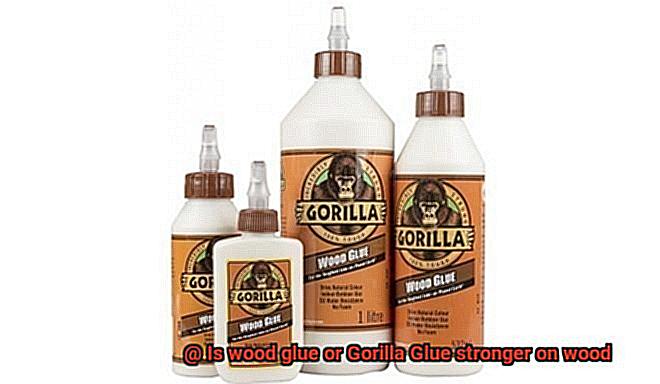
Wood Glue:
Pros:
- Strong bond: Wood glue is specifically formulated for bonding wood, ensuring a sturdy and durable connection that can withstand the test of time.
- Ease of use: With its liquid form, wood glue is effortlessly applied and spread evenly on wood surfaces, facilitating smooth and even bonding.
- Quick drying time: Time efficiency is crucial in projects, and wood glue typically dries within a short period, allowing for faster completion.
- Sandable and paintable: Once dried, wood glue can be sanded down and painted over, providing a seamless finish to your masterpiece.
Cons:
- Limited versatility: The effectiveness of wood glue is primarily limited to bonding wood and may not work as well on other materials such as metal or fabric.
- Longer curing time: Although wood glue dries quickly, it may take longer to fully cure and reach its maximum strength. Patience is required for optimal results.
- Clamping requirement: To ensure a strong bond, clamping or applying pressure on glued surfaces until completely dry is often necessary, adding an extra step to the process.
Gorilla Glue:
Pros:
- Versatile bonding: Gorilla Glue’s versatility shines through in its ability to bond various materials including wood, metal, ceramic, fabric, and more, making it a go-to option for diverse projects.
- Waterproof and weatherproof: If your project will be exposed to moisture or extreme weather conditions, Gorilla Glue is an excellent choice, as it is resistant to water and can withstand harsh outdoor elements.
- Expanding properties: Upon application, Gorilla Glue expands into surrounding areas, filling gaps and creating an even stronger bond, enhancing the overall structural integrity.
- Long-lasting durability: Gorilla Glue forms an unyielding connection that can withstand heavy loads and stand the test of time, ensuring your project’s longevity.
Tips for Using Adhesives on Woodworking Projects
When it comes to woodworking projects, using the right adhesive is essential for creating strong and durable joints. Whether you’re working with wood glue or Gorilla Glue, here are some tips and techniques to help you achieve the best results.
Firstly, it’s crucial to prepare the wood surfaces before applying any adhesive. Clean the surfaces thoroughly, ensuring they are free from dirt, dust, and grease. Use sandpaper or a scraper to smooth out rough spots or old adhesive residue. This step is crucial as it ensures that the adhesive bonds properly and creates a strong joint.
Secondly, apply the adhesive evenly and in the right amount. Too little adhesive may result in weak joints, while too much can lead to messy squeeze-out. Follow the manufacturer’s instructions regarding the recommended amount of adhesive to use. Spread the adhesive over the entire surface that will be joined, using a brush or roller to ensure even distribution.
Once the adhesive is applied, it’s important to clamp the joint together. Clamping helps hold the pieces firmly while the glue dries, creating a tight bond. Use clamps that apply even pressure across the joint without damaging the wood. Leave the clamps in place until the glue has fully dried.
Allow sufficient drying time for the adhesive to cure. This can vary depending on the type of glue used and environmental conditions. Follow the manufacturer’s instructions for the recommended drying time. Be patient and resist the temptation to rush the process, as proper drying ensures a strong and durable bond.
After the adhesive has dried, remove any excess glue by carefully scraping or sanding it off. Be cautious not to damage the wood surface while doing this.
When choosing between wood glue and Gorilla Glue, consider their specific properties and limitations. Wood glue is great for general woodworking projects and provides excellent bonding strength. Gorilla Glue is known for its exceptional strength and versatility on various materials, including wood.
Remember to test the adhesive on a small sample before applying it to the entire project. This will ensure that it works well with your specific woodworking needs.
Also Read: What is the best glue to stick fabric to wood?
Conclusion
In conclusion, the battle between wood glue and Gorilla Glue for dominating wood surfaces is a complex one. Each adhesive has its own set of pros and cons, making them suitable for different tasks.
Wood glue, also known as carpenter’s glue or PVA glue, is a dependable and budget-friendly adhesive that forms an ironclad bond on porous woods. It’s a breeze to use and dries in a flash, making it perfect for indoor woodworking projects that don’t encounter extreme conditions. However, when it comes to non-porous surfaces or situations where moisture resistance is crucial, wood glue might not hold up as well.
Enter Gorilla Glue – the heavyweight champion of strength and versatility. Its polyurethane formula allows it to fuse both porous and non-porous surfaces with ease, making it a knockout choice for various applications beyond woodworking. As Gorilla Glue cures, it expands like a beast, filling gaps and creating an unbreakable connection that can withstand water, heat, and even the most brutal temperatures Mother Nature throws its way. This makes it an absolute powerhouse for outdoor projects or areas exposed to moisture.
When deciding between wood glue and Gorilla Glue, take into account factors such as the type of wood you’re working with, environmental conditions, drying time requirements, and specific application needs. Wood glue is cost-effective and reliable for most woodworking endeavors but may lack the durability needed in certain situations. On the other hand, Gorilla Glue packs superior strength and versatility but may require some extra finesse due to its expanding properties.
Ultimately, selecting the right adhesive boils down to your project’s unique demands.

